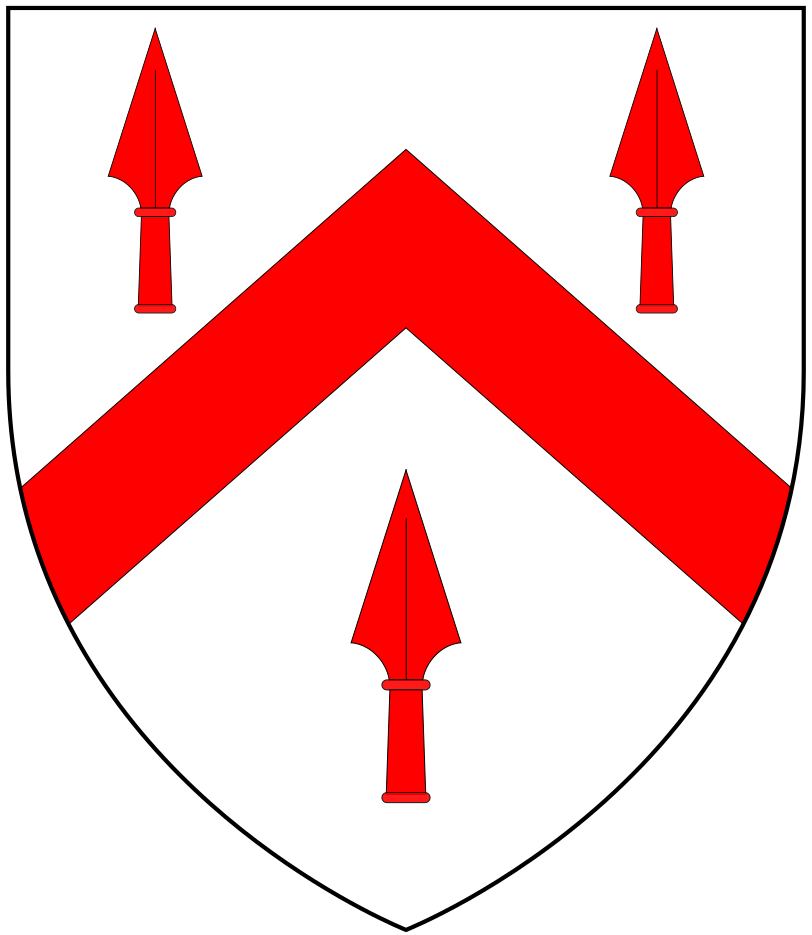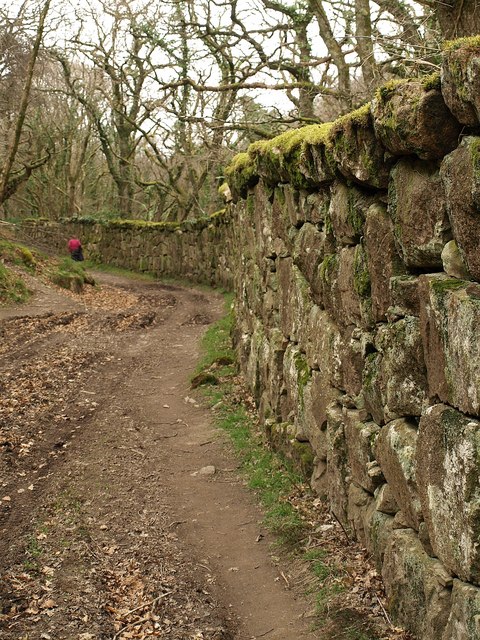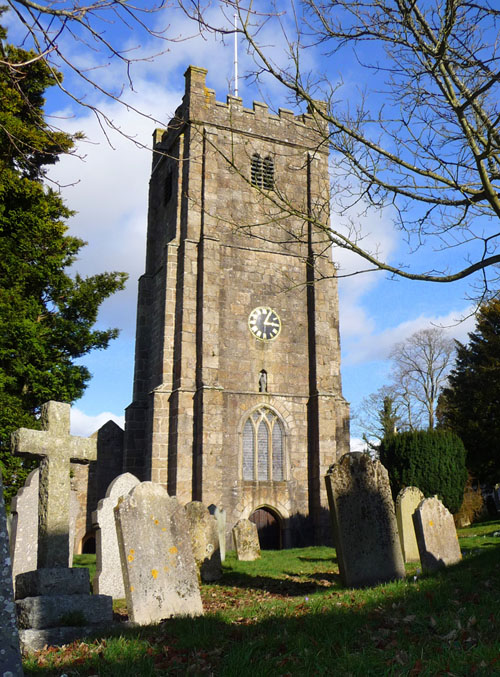|
Oliver Whiddon
Oliver Whiddon was Archdeacon of Totnes between 1568 and 1580. He was the third son of Sir John Whiddon (died 1576), of Whiddon in the parish of Chagford, Devon, a Justice of the King's Bench. His mother was Sir John's second wife Elizabeth Shilston, a daughter and co-heiress of William Shilston. He graduated from Oxford University B.A. in 1560/1 and M.A. in 1563 and was a fellow of Exeter College in October and November, 1573. He was appointed a Canon of Exeter 1567 and Archdeacon of Totnes The Archdeacon of Totnes or Totton is the senior ecclesiastical officer in charge of one of the oldest archdeaconries in England. It is an administrative division of the Church of England Diocese of Exeter and under the oversight of the Bishop suf ... from 1568 to 1580. He was rector of North Bovey 1562, of Combinteignhead 1572 and of Haccombe, 1575, and of Yoxall, Staffordshire. References Archdeacons of Totnes {{Canterbury-archdeacon-stub ... [...More Info...] [...Related Items...] OR: [Wikipedia] [Google] [Baidu] |
Archdeacon Of Totnes
The Archdeacon of Totnes or Totton is the senior ecclesiastical officer in charge of one of the oldest archdeaconries in England. It is an administrative division of the Church of England Diocese of Exeter and under the oversight of the Bishop suffragan of Plymouth. History The first recorded archdeacon of Exeter occurs in 1083, around the time when archdeacons were first appointed in Britain. Around that time, the Diocese of Exeter was divided into four archdeaconries: Exeter, Cornwall, Totnes (or Totton) and Barnstaple (or Barum). This configuration of archdeaconries within the diocese remained for almost 800 years, until the creation of the independent Diocese of Truro from the Cornwall archdeaconry. On 22 March 1918, the archdeaconries were reconfigured and the Archdeaconry of Plymouth created from Totnes archdeaconry. Presently, the diocese operates an informal 'area scheme' such that responsibility for roughly half the diocese is delegated to each suffragan bishop: special o ... [...More Info...] [...Related Items...] OR: [Wikipedia] [Google] [Baidu] |
John Whiddon
Sir John Whiddon (died 27 January 1576) of Whiddon in the parish of Chagford in Devon, was a Justice of the Queen's Bench from 4 October 1553 to his death on 27 January 1576, during the reigns of Queen Mary I and Queen Elizabeth I. Personal life He was the son of John Whiddon of Chagford by his wife who was a member of the Rugg family of Chagford. His ancestors were resident in the parish of Chagford for at least six generations prior to the judge. Whiddon married twice. His first wife was Ann Hollis, daughter of Sir William Hollis, by whom he had a daughter, Joane, who married John Ashley of London. His second marriage was to Elizabeth Shilston, a daughter and co-heiress of William Shilston. Among their eleven children were William, his eldest son and heir apparent, who predeceased his father without children, having married Eleanor Basset, a daughter of John Basset (1518–1541), and Francis (died 1606), fourth son, whose granddaughter was the legendary Mary Whiddon. Their ... [...More Info...] [...Related Items...] OR: [Wikipedia] [Google] [Baidu] |
Nikolaus Pevsner
Sir Nikolaus Bernhard Leon Pevsner (30 January 1902 – 18 August 1983) was a German-British art historian and architectural historian best known for his monumental 46-volume series of county-by-county guides, ''The Buildings of England'' (1951–74). Life Nikolaus Pevsner was born in Leipzig, Saxony, the son of Anna and her husband Hugo Pevsner, a Russian-Jewish fur merchant. He attended St. Thomas School, Leipzig, and went on to study at several universities, Munich, Berlin, and Frankfurt am Main, before being awarded a doctorate by Leipzig in 1924 for a thesis on the Baroque architecture of Leipzig. In 1923, he married Carola ("Lola") Kurlbaum, the daughter of distinguished Leipzig lawyer Alfred Kurlbaum. He worked as an assistant keeper at the Dresden Gallery between 1924 and 1928. He converted from Judaism to Lutheranism early in his life. During this period he became interested in establishing the supremacy of German modernist architecture after becoming aware of Le ... [...More Info...] [...Related Items...] OR: [Wikipedia] [Google] [Baidu] |
Whiddon, Chagford
Whiddon is an historic estate in the parish of Chagford in Devon, England. The manor house, now known as Whiddon Park House, survives as a remnant of the larger 16th-century mansion house of the Whiddon family.Cherry & Pevsner, p. 251. The house displays the date 1649 inscribed above the inner doorway. The manor house is now the property of the National Trust and is let for a nominal rent, but on a full repairing and insuring lease expiring on 17 January 2079. The deer park, which is bounded by a wall built of massive granite blocks at the entrance to the Teign Gorge, was built by Sir John Whiddon (died 1576), a Justice of the King's Bench. His monument survives in St Michael's Church, Chagford.Cherry & Pevsner, p. 250. References ;Sources * Cherry, Bridget & Pevsner, Nikolaus Sir Nikolaus Bernhard Leon Pevsner (30 January 1902 – 18 August 1983) was a German-British art historian and architectural historian best known for his monumental 46-volume series of ... [...More Info...] [...Related Items...] OR: [Wikipedia] [Google] [Baidu] |
Chagford
Chagford is a market town and civil parish on the north-east edge of Dartmoor, in Devon, England, close to the River Teign and the A382, 4 miles (6 km) west of Moretonhampstead. The name is derived from ''chag'', meaning gorse or broom, and the ''ford'' suffix indicates its importance as a crossing place. At the 2011 Census, it had a population of 1,449. History Archaeological remains confirm that a community has existed here for at least 4000 years. In historical times, Chagford grew due to the wool trade and from tin mining in the area. A weekly market was held here from before 1220, and a monthly livestock market in the town survived until the 1980s. In 1305 it was made a stannary town where tin was traded. Among the most prominent tin-mining families in the 16th century were the Endecotts, Knapmans, Whiddons and Lethbridges. In an English Civil War skirmish Sidney Godolphin, the poet and Royalist MP for Helston, was shot and killed in the porch of the Three Crowns. In ... [...More Info...] [...Related Items...] OR: [Wikipedia] [Google] [Baidu] |
Justice Of The King's Bench
Justice of the King's Bench, or Justice of the Queen's Bench during the reign of a female monarch, was a puisne judicial position within the Court of King's Bench, under the Chief Justice. The King's Bench was a court of common law which modern academics argue was founded independently in 1234, having previously been part of the '' curia regis''. The court became a key part of the Westminster courts, along with the Exchequer of Pleas (qualified to hear cases involving revenue owed to the King) and the Court of Common Pleas (qualified to hear cases between subject and subject); the latter was deliberately stripped of its jurisdiction by the King's Bench and Exchequer, through the Bill of Middlesex and Writ of Quominus respectively. As a result, the courts jockeyed for power. In 1828 Henry Brougham, a Member of Parliament, complained in Parliament that as long as there were three courts unevenness was inevitable, saying that "It is not in the power of the courts, even if all were ... [...More Info...] [...Related Items...] OR: [Wikipedia] [Google] [Baidu] |



